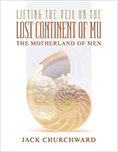While researching information for my upcoming book on the Great Uighur Empire, I ran across an article entitled “The Ancient Uighur (Uygur) Empire” by Dr. Haluk Berkmen. According to the page information, it was last updated in April 2009.
The article begins: “The present work is an investigation into the forgotten past. Its goal is to bring into light the ancient civilization that existed many thousand years ago and which is not mentioned in any history book.”
In the fifth paragraph, he unveils where he believes where this cradle of civilization originated, Central Asia, according to ‘linguists worldwide.’ The next paragraph indicates his investigation for this ancient civilization starts in Asia and the proto-language (read Sun Language) spoken there.
The next portion identifies the ancient civilization as the Ancient Uygur Empire, the Empire of the Sun and tentatively dates it to 20,000 years BP. His source, James Churchwald, British military officer and author of books on the Lost Continent of Mu (at least he was consistent, all six mentions are misspelled the same way.) He even includes quotes and the map of the Great Uighur Empire from the Lost Continent of Mu Motherland of Men

Map of the Great Uighur Empire
At one point, the narrative steers away from what James really wrote. Berkmen relates:
“Note that the Turks were also known under the name Mu. Therefore, the lost Mu Empire claimed by James Churchwald was another name given to the imperial nomads of Asia.”
The author’s intent becomes clear when he states:
“Recognizing this situation we will adopt the name Uighur as a generic name for these genetically, culturally and linguistically connected people. The history of these people is the history of humanity, the history of the Forgotten Past.”
| To sum up his theory, the beginning of civilization on earth was created by Turks in Central Asia. |
How does this stack up to what James wrote?
Does the word ‘Turk’ appears in James’ works?
A search of all James’ published English-language works (excluding the 1927 Books of the Golden Age,) reveals no use of the word, Turk; however, there is one use of a word with those four letters in sequence, Turkestan, as shown below:
TIBET —Tibet lies in Central Asia. It is bounded on the east by China, on the north by Mongolia, on the south by India, and on the west by Kashmir and Turkestan. The Gobi Desert is a part of the northern boundary. Tibet was once a part of the great Uighur Empire. This was before the mountains were raised. The country then was flat and fertile. Now it is one of the highest plateaus in the world with masses of high mountain ranges, most of which run from a westerly to an easterly direction. In the south is the highest mountain range in the world—the Himalayas. Mount Everest, the world’s highest mountain, is in this range and lies within the boundaries of Tibet. Tibet has been called “the roof of the world.”
Children of Mu page 221
Does James refer to the Uighur Empire as the Empire of Mu?
In the 1926 Lost Continent of Mu Motherland of Men, James writes:
The Uighur was the principal colonial empire belonging to Mu at the time of the biblical “Flood,” which destroyed its eastern half.
James also writes about several other colonies, including the Naga, Caucasian, Egyptian, Hindu and Maya colonies. This basic theme is continued throughout his other works as well; Mu was the Garden of Eden where mankind first appeared. Therefore, in James theories it is clear, Mu was not another name given to the Uighur.
Does James refer to the Uighurs as Turks?
Since the word ‘Turk’ does not appear in James’ works, it would be difficult to support this assertion. In three different works, James calls his Uighur as the forefathers of the Aryan race. Quoting from the Children of Mu:
The Uighurs were all of a light complexion, milk-white skins, with varying color of eyes and hair. In the north blue eyes and light hair predominated. In the south were found those with dark hair and dark eyes.
Obviously, James had subdivisions of his ancient Uighur but called them all Aryan.

A different Uighur Empire Map
In James’ works, the Great Uighur Empire is a colony of his sunken continent of Mu lasting tens of thousands of years and encompassing most of Asia and Europe. Somehow, they end up spreading civilization around the world. Some may be forgiven if they missed the contradiction; James asserts all people came from Mu, his Garden of Eden. If everyone came from the ancient advanced civilization of Mu, who were the people that needed to be civilized? Where did they come from? James’ theory of an advanced civilization (whether it is Turks or Aryans) civilizing the world undermines James basic premise and inserts a paradox. If everybody was from Mu’s great civilization, they cannot meet other people not from Mu, or if people from Mu met other people, then Mu could not be where all the people came from. Furthermore, the use of his theory of ‘spreading civilization’ by either Turkic or Aryan peoples denies indigenous peoples their birthright. And it is wrong.
I have no control over how my great-grandfather’s words are used by others; however, I believe I have every right to point out the fallacies and how his theories are twisted to promote agendas he did not support. I also believe current researchers should abandon the use of unsubstantiated and discredited theories James espoused in the early 20th century; especially when they are used to promote racist and/or mythical nationalistic ideologies.
Please note, links to external articles are meant to provide a starting point for further investigation, should the reader so choose.








 RSS - Posts
RSS - Posts
One response to “Where Are the Turks in The Lost Continent of Mu?”